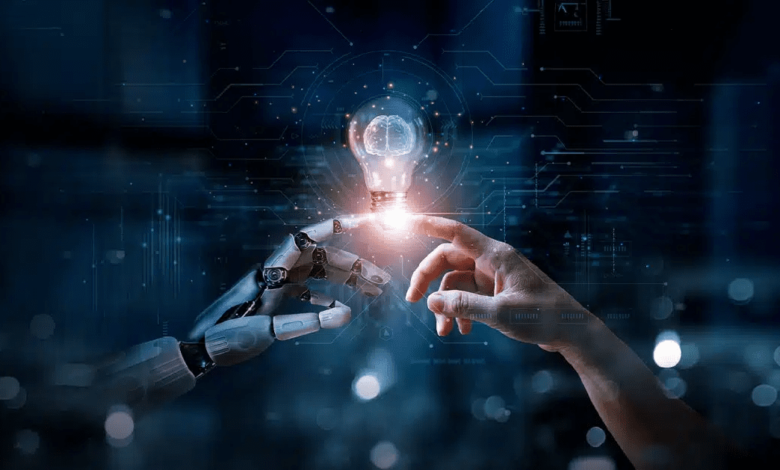Promoting Student Well-Being By Developing Their Readiness For Artificial Intelligence Age

Vineeta Garg, IT Head, SRDAV Public school
Gunjan Tomar, Activities and Service as Action Coordinator, DPS International Gurugram

Artificial Intelligence is the most talked about topic in today’s world. There has been an exponential rise in the demand for AI-enabled systems and practices in all aspects of our lives. The education field is also one of the fields that has a significant impact of AI. With this ease of accessing information and doing education-related chores utility of AI has to be mindful and responsible. It is essential for us as facilitators to prepare our students for the changes and challenges that come with this technology. One of the ways to promote students’ well-being is to develop their readiness for this technology-based learning tool.
Readiness for AI can be referred to as the ability of individuals to understand, adapt and utilize AI to optimize their learning mindfully and responsibly. This includes equipping oneself with the knowledge, skills and attitude to navigate this ever-evolving world of AI. AI-ready students will be the students who will make use of AI to optimize their learning in the technology-based environment while also managing the risks associated that come with AI.
In this AI-enabled era, students will encounter new challenges and opportunities. They will need to adapt to new ways of working, learning, and living. Students who are not ready for AI may struggle to keep up and experience stress and anxiety as a result. On the other hand, students who are ready for AI will be better equipped to thrive in the new environment, leading to improved well-being and success.
Developing Readiness of AI in Students
1. Being AI Aware to manage AI well – Artificial Intelligence has the potential to address some of the biggest challenges like the ability to address diversity, equity and inclusion in learning etc. in the field of education. AI can provide opportunities for innovative teaching-learning experiences and accelerate learning processes to achieve SDG 4 which is Quality Education if utilized mindfully and responsibly. To help students become aware of the opportunities and threats possessed by the SEAIL model can be integrated as a part of learning. Explicit and implicit sessions related to SEAIL can help students become aware of the nuances of AI and optimize the permitted use of AI to understand the threats associated with it.
2. AI integration in the Curriculum – AI is no longer a luxury now, it has reached our households and knowingly or unknowingly we are using it to simplify many of our daily chores. Integration of AI into the curriculum will help students to understand how it works and how it can be used in various fields. Integrating AI into the curriculum can provide students with access to advanced technology that they may not have access to otherwise. This can help level the playing field and ensure that all students have the opportunity to learn about and use AI. This will certainly help students acquire skills that will prepare them for the jobs of the future.
3. Offering AI-related extracurricular activities- Offering extracurricular activities related to AI, will help students develop an interest in technology and potentially pursue careers in related fields. This will help provide students with hands-on experience and develop practical
skills such as coding, data analysis, and machine learning. This will further motivate them to provide solutions to some local and global problems using AI.
4. Promoting digital well-being and digital literacy- With technology comes responsibility. By promoting digital literacy, students can learn how to use technology safely and responsibly, understand the potential risks of technology use, and learn how to protect themselves from online threats. Digital well-being is essential for maintaining good mental health. By promoting digital well-being, schools can teach students to establish healthy habits around technology use, such as taking regular breaks from screens, avoiding excessive social media use, and prioritizing face-to-face interactions. Digital literacy is a critical skill in many jobs and industries. By promoting digital literacy and
digital well-being, schools can help prepare students for the digital workforce of the future.
5. Developing a Growth Mindset – Developing a growth mindset among students is crucial for their academic and personal success. It encourages students to see challenges as opportunities to learn and grow and reminds them that mistakes are a natural part of the learning process. Instead of solely focusing on grades or test scores, it is important to emphasize progress and improvement. Educators should encourage students to set goals and track their progress towards them. This way students can learn to embrace challenges, see failure as an
opportunity for growth, and achieve their full potential.
6. Using AI as a powerful tool to do subject-specific research – AI tools can search through vast amounts of literature to find relevant articles and sources on a particular topic. Students can use these tools to find the latest research and develop a deeper understanding of their subject matter. These tools can help students analyze large datasets and identify patterns and trends that may be difficult to see with the naked eye. This can help students draw more informed conclusions and support their research with empirical evidence.
Benefits of developing AI Readiness
1. Creating a Personalized learning environment- AI tools can adapt to the individual needs of each student, providing them with personalized resources based on their interests and learning style. Nowadays AI-based Digital Coaches are quite popular. They act as
personal coaches to learners. Microsoft Learning tools are one such example that is used to personalize learning for students according to their learning needs. Here is a playlist of MS tools used to personalize students’ learning in classrooms.
2. Prompt and effective Assessment and feedback- AI can be used as a powerful tool to provide real-time feedback on assessments to learners. Its capability to analyze students’ performance and personalized feedback based on their strengths and weaknesses will
provide a clear academic path of strategies to be adopted by the students to further enhance their strengths and work on their challenges in a focused manner.
3. Intelligent tutoring- AI-powered tutoring systems are intelligent. Based on their abilities, preferences and learning goals they can provide personalized support to individual learners. These systems identify areas where learners need help and provide targeted support to help them thrive.
In conclusion, promoting student well-being by developing their readiness for the artificial intelligence age is a crucial step towards ensuring their success in the future and creating a more peaceful and harmonious world. The integration of AI in various sectors of the economy clearly indicates the need for students’ preparedness to navigate the new job market. By developing their skills in critical thinking, creativity, and problem-solving, students can become better equipped to handle the challenges presented by the AI age. Additionally, fostering a growth mindset, promoting self-awareness, and developing emotional intelligence can help students develop resilience and adaptability, which are vital skills for success in the rapidly changing world. Ultimately, by focusing on promoting student well-being and readiness for the AI age, we can help ensure that they have the necessary skills and mindset to thrive in the future.





